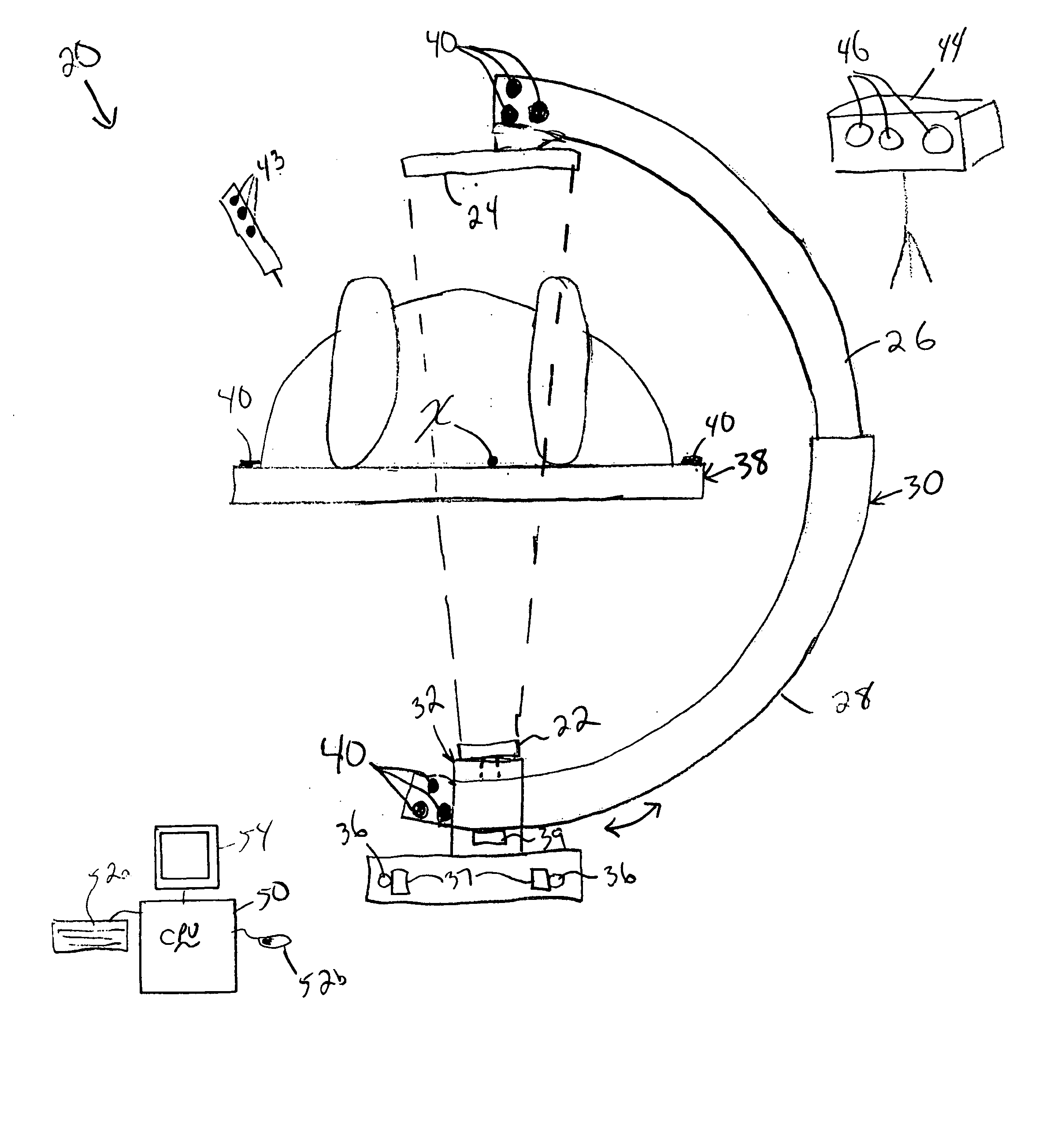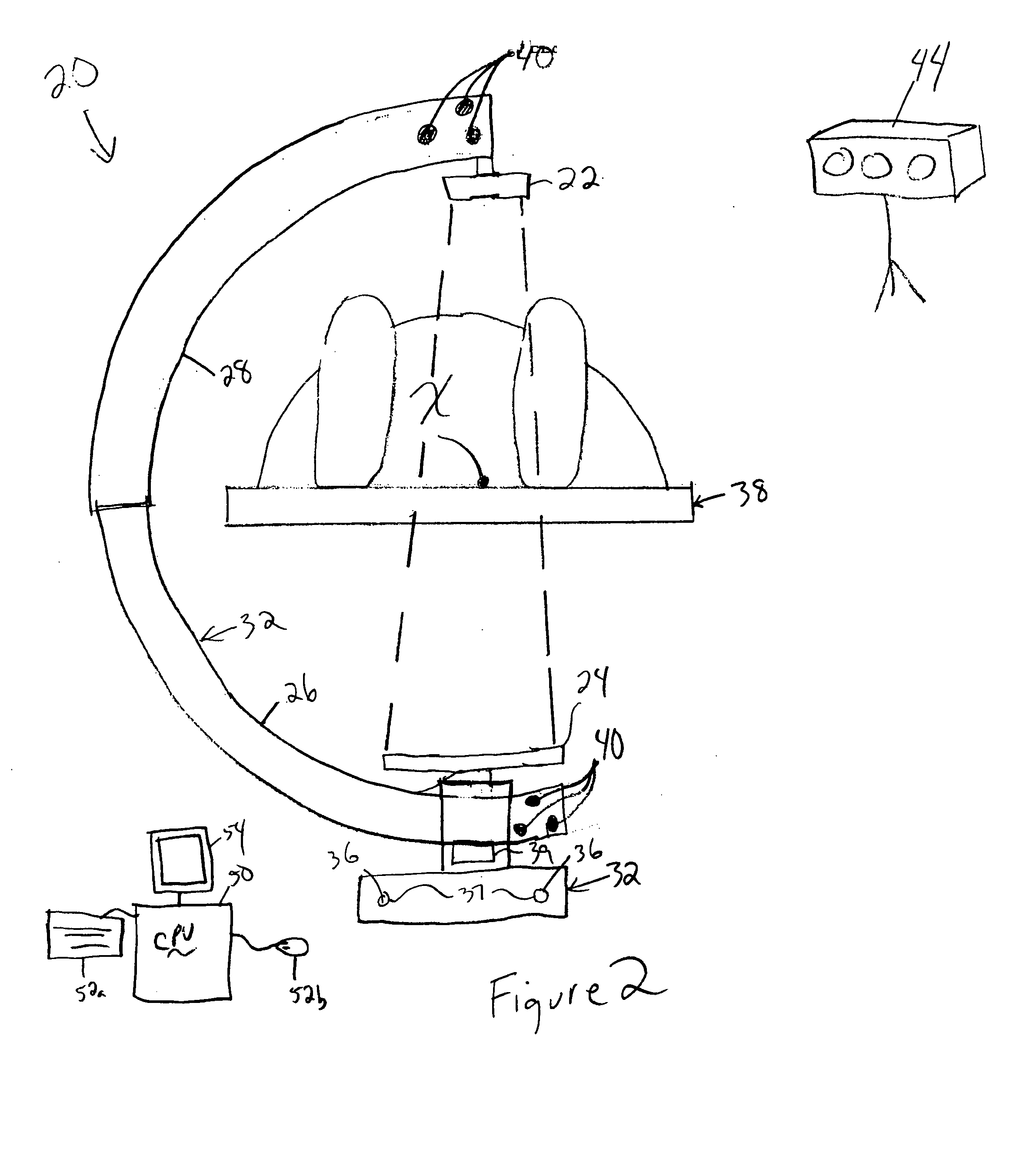Intraoperative imaging system
a technology of imaging system and intraoperative, applied in the direction of radiation beam directing means, instruments, applications, etc., can solve the problems of reducing the effectiveness of surgery, affecting the operation, and affecting the operation efficiency, so as to reduce the size of the operation, facilitate the operation, and facilitate the movement.
- Summary
- Abstract
- Description
- Claims
- Application Information
AI Technical Summary
Benefits of technology
Problems solved by technology
Method used
Image
Examples
first embodiment
[0014] an intraoperative imaging system 20 according to the present invention is shown in FIGS. 1-4. The imaging system 20 is particularly useful for image-guided surgery or other applications where intra-operative imaging would be desired. Although applicable for other types of imaging systems, the present invention will be described with respect to an intra-operative CT scanning system 20 for illustrative purposes. Referring to FIG. 1, the CT scanning system 20 includes a source 22 and detector 24 mounted at outer ends of a first c-arm section 26 and a second c-arm section 28, respectively. The source 22 may be a cone-beam x-ray source 22. The detector 24 may be a flat panel detector 24 having a converter for converting x-rays into light which is detected by an array of photodetectors.
[0015] The first and second c-arm sections 26, 28 are slidably connected to one another, such that first c-arm section 26 slides telescopes within the second c-arm section 28. The first and second c-...
second embodiment
[0024] the system 20a is shown in FIG. 5. In FIG. 5, the c-arm section 28a is slidably mounted along the inner arc surface of the c-arm section 26a. The c-arm sections 26a, 28a are shown in the collapsed position in FIG. 5. Otherwise, the operation is as described above.
third embodiment
[0025] A third embodiment is shown in FIG. 6, which is a section view through the carriage 32b. In this embodiment, the c-arm sections 26b, 28b are separately supported in the carriage 32b, with separate motors 39b driving each about the axis during scanning. Although the source 22 and detector 24 are offset slightly along the x-axis, they can be tilted slightly to accommodate this offset.
PUM
 Login to View More
Login to View More Abstract
Description
Claims
Application Information
 Login to View More
Login to View More - R&D
- Intellectual Property
- Life Sciences
- Materials
- Tech Scout
- Unparalleled Data Quality
- Higher Quality Content
- 60% Fewer Hallucinations
Browse by: Latest US Patents, China's latest patents, Technical Efficacy Thesaurus, Application Domain, Technology Topic, Popular Technical Reports.
© 2025 PatSnap. All rights reserved.Legal|Privacy policy|Modern Slavery Act Transparency Statement|Sitemap|About US| Contact US: help@patsnap.com



